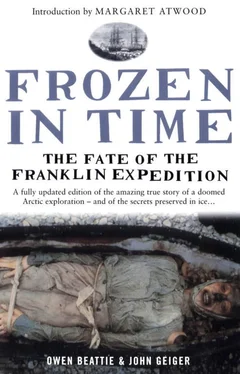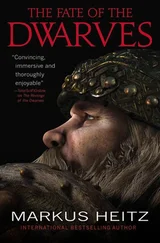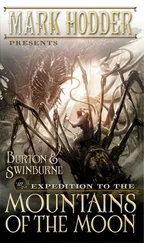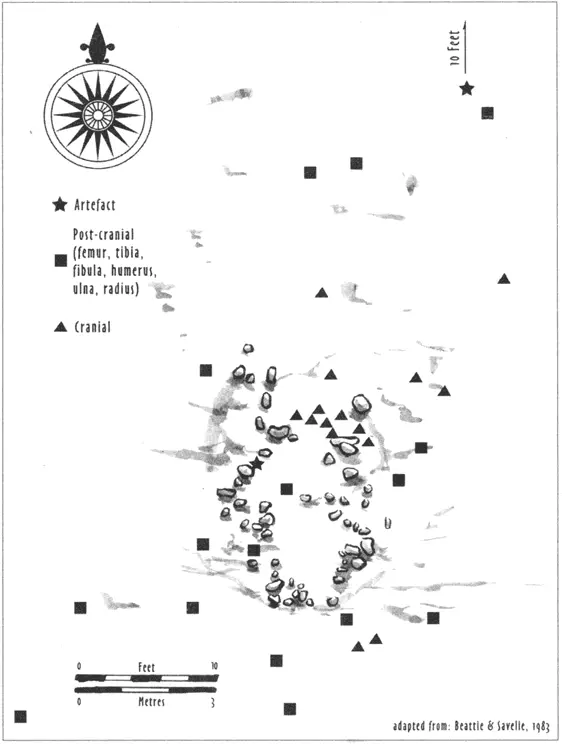
Map depicting scatter of human remains and Franklin-era artefacts around a tent circle at Booth Point, King William Island.
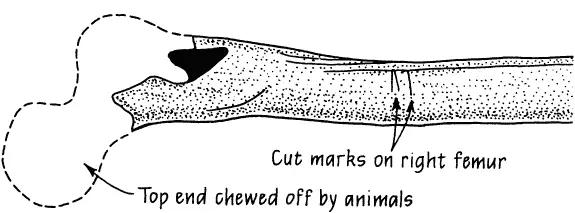
Hudson’s Bay Company searcher John Rae was the first to hear of the ghastly possibility of cannibalism among Franklin expedition crewmen. In the spring of 1854, Rae was given details of the expedition’s final days by Inuit who also had in their possession a variety of artefacts. Rae recorded their descriptions of a shocking sight:
From the mutilated state of many of the corpses and the contents of the kettles, it is evident that our wretched countrymen had been driven to the last resource—cannibalism—as a means of prolonging existence.
The response to this testimony was immediate and fierce. Many Britons simply refused to believe cannibalism was possible. Charles Dickens, who followed the Franklin search closely, spoke for them when, in 1854, he argued that Franklin expedition crewmen represented the “flower of the trained English Navy… it is the highest degree improbable that such men would, or could, in any extremity of hunger, alleviate the pains of starvation by this horrible means.”
Dickens then attacked the source of the stories, the Inuit, as “covetous, treacherous and cruel…” Writing in Household Words, he said:
In weighing the probabilities and improbabilities of the ‘last resource,’ the foremost question is—not the nature of the extremity; but the nature of the men. We submit that the memory of the lost Arctic voyagers is placed, by reason and experience, high above the taint of this so-easily allowed connection; and that the noble conduct and example of such men, and of their own great leader himself, under similar endurances, belies it, and outweighs by the weight of the whole universe the chatter of a gross handful of uncivilised people, with a domesticity of blood and blubber.
United States Chief Justice Charles Patrick Daly, president of the American Geographical Society, went a step further, charging that Franklin was “murdered by the Indians, who had already imbued their hands in the blood of white travellers.” Rae fought back, arguing,
I consider it no reproach, when suffering the agony to which extreme hunger subjects some men, for them to do what the Esquimaux tell us was done. Men so placed are no more responsible for their actions than a madman who commits a great crime. Thank God, when starving for days, and compelled to eat bits of skin, the bones of ptarmigan up to the beak and down to the toenails, I felt no painful craving; but I have seen men who suffered so much that I believe they would have eaten any kind of food, however repulsive.
Fifteen years later, Rae received corroboration from Charles Francis Hall, who had also heard the tales of cannibalism and reported them in much greater detail. Even today, the stories are abhorrent. The Inuit reported finding boots “that came up high as the knees and that in some was cooked human flesh—that is human flesh that had been boiled.” Wrote Hall: “Some bones had been sawed with a saw; some skulls had holes in them.” Other bodies found nearby had been carefully stripped of all flesh, “as if some one or other had cut it off to eat.”
Even three decades after the disaster, gruesome accounts continued to be collected from the Inuit of the region. Lieutenant Frederick Schwatka’s 1879 search recorded “almost unmistakable evidences of their being compelled to resort to cannibalism.” An Inuk named Ogzeuckjeuwock reported seeing “bones from legs and arms that appeared to have been sawed off… The appearance of the bones led the Inuits to the opinion that the white men had been eating each other.” Schwatka’s account was compelling and, according to one British newspaper, had finally “cleared the reputation of a harmless people from an undeserved reproach.”
It is difficult for those sated in their daily demands for food and drink to believe that any civilized person would intentionally and knowingly eat human brains, consume strings of arteries or split open bones so that the marrow could be picked out and eaten. That fact is no different today than it was during Queen Victoria’s reign. Yet under certain dire, life-threatening circumstances, many people would come to the realization that seems to have faced the last tattered remnants of Franklin’s expedition, that cannibalism is all that stands in the way of sure death.
Modern disasters, such as the 1972 crash of a chartered plane in the Andes Mountains of South America, provide insights into the rationale for consuming other humans. One of those to survive the Andes crash explained later in an interview:
Real hunger is when you have to eat human flesh. But when you see yourself growing thinner and thinner and weaker every day and see the bones standing out and feel your eyesight dimming—you make the decision to live by whatever means possible.
Prehistoric occurrences of cannibalism associated with starvation provide striking similarities to the Booth Point skeleton findings. An archaeological investigation of an Anasazi settlement in the American Southwest revealed 11 skeletons that had been dismembered and processed for eating: “The overall picture of skeletal destruction is that of dismemberment, crushing of long bone shafts, facial mutilation, scattering and loss of elements of the trunk (ribs, vertebrae, and pelves), and the loss of hands and feet.”
So cannibalism follows a pattern: once the decision is made, the initial sections removed from the body are the meatier areas like the buttocks, thighs, lower legs and arms. Recognizably human parts, such as hands and feet, are not eaten at first. As time passes and hunger continues to tear at the survivors, the options of where the flesh comes from are reduced, and bone marrow, organs, arteries and skin are consumed. Removal of muscle tissue is usually done with a knife or other sharp object, and this can leave butchering marks on the bone. Removal of bone marrow requires the bone to be smashed open. The brain is either pulled through the base of the skull or eaten after the face is cut off. The need by members of Franklin’s dying crew for a portable food supply was the reason for the only exceptions to this pattern.
A small group of the last survivors of the doomed expedition trudged eastward along the south coast of King William Island in July or perhaps August 1848. The exhausted men probably continued to hold out hope that they would reach the mouth of the Back River, from where they would attempt to travel nearly 1,000 miles (1,500 km) upstream to the safety of a Hudson’s Bay Company fort located on the eastern edge of Great Slave Lake. Slowing significantly as a result of increased exhaustion aggravated by scurvy, their food supply at an end, the sailors must have desperately looked for alternative food sources. But there were too few birds’ eggs to feed the group and hunting on the sparse northern island would have been unrewarding.
When their food finally ran out and they were too ravaged by hunger and disease to continue, the men sat down and prepared to die. But with the first death came new hope. The survivors must have found themselves contemplating a stark fact: starvation need not be a factor any longer.
Cannibalizing the trunk of the body would have given them enough strength to push on. The head, arms and legs, easily portable, were carried along as a food supply. Finally they came to a part of the island that turned sharply to the northeast—away from their goal. Camping on a small spit of land near Booth Point, the same spit of land later visited by the University of Alberta researchers, they ate their last meal. Disease and physical deterioration continued to drain them of energy as they turned southward across ice-covered Simpson Strait, avoiding the many long, thin slivers of black seawater slicing through the ice and the turquoise and azure pools of meltwater, making their way towards Starvation Cove. For them, the adventure and the suffering would soon be over.
Читать дальше
